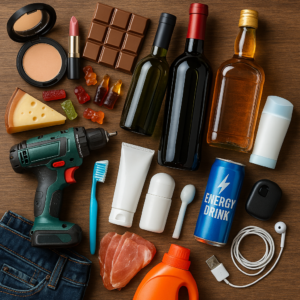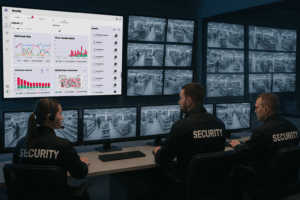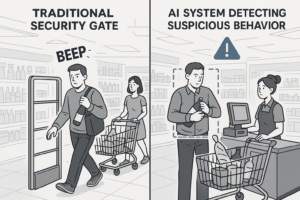Loss prevention is a major challenge for retailers, especially in the grocery, pharmacy, and DIY sectors . Knowing which products are most targeted by theft allows security strategies to be adjusted and stock to be better protected.
🌂 Alcohol and Spirits
Easy to conceal, small in size and high in value, bottles of alcohol top the list of the most stolen items. Their attractiveness for resale makes them a recurring target. Thieves often act in groups, targeting premium brands such as whiskies, vodkas, or champagnes. The resale is often done through parallel channels, including online or at markets. This type of theft represents a significant financial loss for retailers, especially during the holiday season.
🍼 Baby Products
Infant formula, diapers, and wipes are essential items whose high demand makes them frequent theft targets. Their high cost and constant replenishment make them a prime target for resale. Some thieves sell them at reduced prices, taking advantage of the economic pressure on families. Theft of these items is often linked to situations of hardship.
💋 Cosmetics and Perfume
Beauty products, especially high-end perfumes and makeup, are often stolen because of their small size and high market value. Both opportunistic thieves and organized groups target these items, often to supply online resale platforms. Major brands are particularly targeted because of their high demand. Some thieves even use lined bags to evade security gates.
💊 OTC Medications
In pharmacies, painkillers, dietary supplements, and other OTC products are common targets. Their small size makes them easy to steal. Some medications can be diverted from their initial use, making them even more attractive. Additionally, their sometimes high price motivates theft for under-the-table resale or personal use. Pharmacies must therefore combine prevention and monitoring without hindering accessibility.
🌟 Batteries and Small Electronics
Batteries, memory cards, and phone accessories are among the most stolen items, especially in hardware or convenience stores. Their compact size and high unit value make them easy to steal and resell. They are highly sought after due to strong demand. Thefts sometimes occur in series, with entire aisles being targeted in low-surveillance areas.
👔 Razors and Blades
Despite being basic products, disposable razors and refills are often stolen because of their high price and compact form. Discreet packaging makes them easy to conceal. Many thieves target them for personal use as well as for resale online or at markets. These items represent a high replacement cost for stores, which must strengthen their protection with anti-theft boxes.
💰 Gift Cards and Prepaid Vouchers
Taken before activation, these cards are sometimes stolen in bulk, notably for resale or fraudulent use. Their thin format makes them easy to steal at checkout or from shelves near the exits.
🥛 Packaged Cheese and Meat
In the food sector, these high-value-added products are highly sought after, mainly because of their popularity. Food theft is often driven by immediate needs, but can also be organized on a large scale.
🏋️ Clothing and Accessories
Clothing items, especially small accessories, sunglasses, or caps, are often targeted on the shelves. Trendy brands are particularly targeted for resale on secondhand platforms. Some thieves make store rounds to stock up for resale.
🧬 Tools and DIY Materials
In DIY stores, screwdrivers, drill bits, and small equipment are frequently stolen because they are easy to hide and resell. Their constant demand, notably among professionals or weekend DIYers, makes them a profitable target. Stores must strengthen the surveillance of technical aisles and restrict access to certain products.
🛡️ Anticipating Theft with Behavioral Detection
Rather than simply monitoring products, innovative retailers are adopting solutions based on suspicious gesture analysis . By using artificial intelligence to identify risky behaviors in real time , it is possible to prevent theft without harming the customer experience.
Technologies such as those offered by Oxania provide precise, non-intrusive detection tailored to each store type, allowing store teams to react quickly while creating a safer environment for everyone.
📆 In Conclusion
Understanding which products are most exposed to theft is an essential first step. But by combining this knowledge with intelligent AI tools, it becomes possible to reduce losses, increase profitability, and protect brand reputation . Behavioral technology is now a powerful ally for the commerce of tomorrow.





